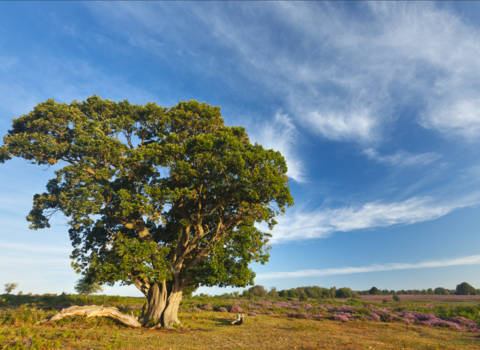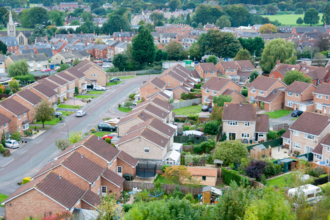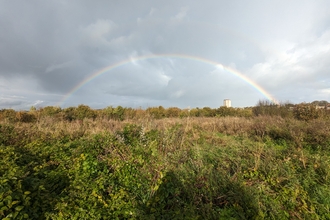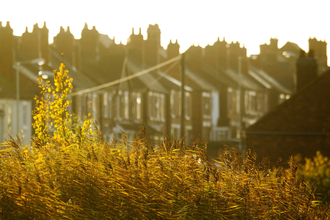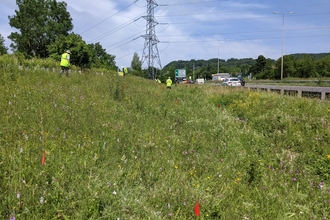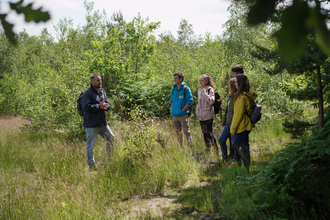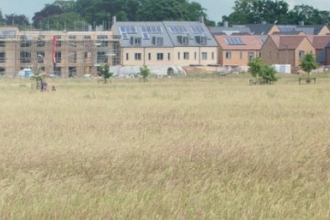What is Biodiversity Net Gain?
Biodiversity Net Gain (BNG) is a way of creating and improving natural habitats by ensuring that development has a measurably positive impact (‘net gain’) on biodiversity, compared to what was there before development.
Starting from February 2024, most new developments will be obligated by government to leave the natural environment in a better condition than it was prior to their development activities. Under this new policy, the majority of developments will be legally required to deliver at least a 10% increase in natural habitat.
Many developers will be able to achieve this by incorporating features such as ponds or wildlife areas directly on the development site. However, if developers are unable to meet this requirement on their own site, they will be required to establish this natural habitat in another location nearby. This presents an opportunity for farmers and landowners to diversify their land use, generate income and contribute to the preservation of biodiversity by making their land available for offset units.
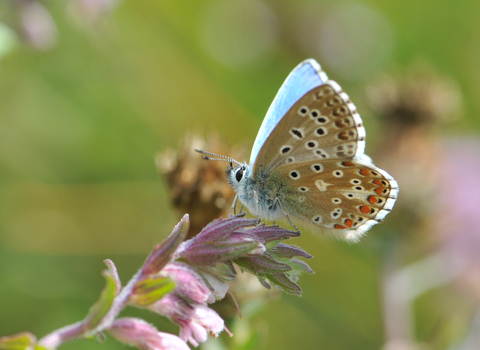
BNG at Kent Wildlife Trust
As the county’s leading nature conservation charity, Kent Wildlife Trust Group is keen to ensure that Biodiversity Net Gain leads to the best outcomes for nature. We are working with local authorities, farmers, landowners and developers to make sure that BNG funds are used to create the right habitats in the right locations, to build a Local Nature Recovery Network. We work with local planning authorities to encourage at least 20% biodiversity net gain into local plans: double the statutory amount.
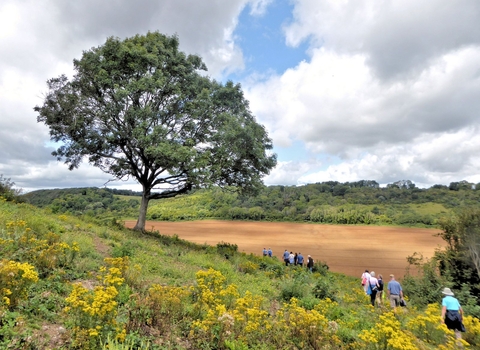
Photo by Rob Riddle
Are you involved in BNG in Kent?
If you are involved in Biodiversity Net Gain in Kent, whether as a developer, ecologist, landowner or farmer, our environmental consultancy team at Adonis Blue Environmental Consultancy are keen to work with you and follow the same stringent due diligence process. The consultancy team have built up significant experience in the requirements for BNG and can help from start to finish for any upcoming BNG projects, from ecological survey work to BNG unit sale and ongoing site monitoring and reporting. As part of the Kent Wildlife Trust Group, any profits made through the sale of BNG units are then reinvested back into our conservation work.
Working with Kent Wildlife Trust
At the Trust, we have a wealth of experience in delivering habitat improvement projects that maximise the benefits to local wildlife and nature and can provide you with expertise and advice at every step of your project. BNG provides the opportunity to drive best practise development and land management combined with funds to protect and restore nature across Kent.
Kent Wildlife Trust Group are now very well placed to make Biodiversity Net Gain work for wildlife in our county.
- The Kent Wildlife Trust Planning team work closely with the planning teams at Kent County Council and will continue to object – where required – to highlight bad planning applications, whilst working with local planning authorities, developers and partners in the Kent Nature Partnership to make sure that BNG is delivered within an effective and a joined up local policy framework that puts nature first.
- Our Consultancy team will work with those developers who pass our due diligence processes to develop BNG plans that have the best chance of driving real gains for wildlife – working in a mission consistent way with Kent Wildlife Trust and investing profits back into nature conservation.
- Our Land Management team will then be able to take on long-term management of any additional land that we can bring into conservation management as offsets are created.
- Meanwhile, our Advocacy team – working in conjunction with other Wildlife Trusts – challenge whether the overall level of housing being proposed in the South East is ecologically feasible and drive best practise planning and development to ensure that nature and wildlife are considered and prioritised as part of the decision making process.
- Working as a cross-cutting team we will focus all Biodiversity Net Gain investments into a long-term landscape framework – under the Nature Recovery Network – so that Biodiversity Net Gain contributes to delivering on the principles of making our wildlife habitats bigger, better and more joined up.
Frequently Asked Questions
One of our aims is to make it normal for all housing, commercial and infrastructure development to contribute positively to nature’s recovery on land and at sea. Biodiversity Net Gain, implemented in the right way, is therefore an important mechanism to help achieve our goal to restore nature and collaborate for the benefit of nature across Kent.
When will biodiversity net gain become mandatory? Why is there a delay for mandatory BNG for small sites until April 2024?
We expect the mandatory requirement to come into place in January 2024 for all Town and Country Planning Act development but exemptions and small sites. The Government said there would be a 2 year implementation period for mandatory BNG once the Environment Bill received Royal Assent and became the Act (which happened on 9 November 2021).
The Act includes provision for secondary legislation to set a date for the requirement to come into force. This Government press release from 27 September 2023 outlines the timetable for mandatory BNG. It sets out that the relevant legislation will be laid in November 2023 and BNG will be required from January 2024. Implementation for Nationally Significant Infrastructure Projects is planned for 2025.
The Government set out that the transition period for small sites will be extended to April 2024. The delay to implementing BNG for small sites is to lessen initial burdens and allow a longer period for developers and local planning authorities to adapt and prepare for the high volume for minor applications.
How could BNG benefit wildlife in Kent?
Kent Wildlife Trust Group (KWTG)’s strategy sees BNG as a key mechanism to fund nature restoration and to be used as strategically as possible – e.g. linked to making the Local Nature Recovery Network (LNRN) something real and effective on-the-ground as a major component of delivering on the UK’s 30x30 international biodiversity commitment 10.
To restore nature at scale society needs to Protect; Restore; and Fund. Biodiversity Net Gain can play a part at all 3 levels. It should work for wildlife. We have a duty to make sure it does now that it’s here. Kent Wildlife Trust will work to make sure it has the maximum possible positive impact and will only work with those who have the right approach.
What are the key components of mandatory BNG?
Mandatory BNG, due now to come into force in January 2024, sets the bar higher than previous, existing regulations and guidance around ecological mitgation for development – which was previously virtually unquantified, and poorly implemented. Delivering BNG properly depends on implementing the Mitigation Hierarchy (see below) properly. BNG can be used at the ‘Mitigate’ and ‘Offset/Compensate’ stages, either onsite and/or offsite.
The Environment Act sets out the following key components of mandatory biodiversity gain:
- Amends Town & Country Planning Act (TCPA);
- Minimum 10% gain required calculated using the Biodiversity Metric & approval of a biodiversity gain plan;
- Habitat secured for at least 30 years via planning obligations or conservation covenants;
- Delivered on-site, off-site or via a new statutory biodiversity credits scheme; and
- National register for net gain delivery sites.
It does not change existing legal protections for important habitats and wildlife species. It maintains the mitigation hierarchy of avoiding impacts first, then mitigate and only compensate as a last resort. It will apply to Nationally Significant Infrastructure Projects (NSIPs) but not marine development.
What is the 'Mitigation Hierachy'?
The Mitigation Hierarchy outlines a sequential approach to addressing impacts from development on biodiversity, prioritised as per below:
1. Avoidance: project proposals should firstly seek to avoid any adverse impacts on biodiversity through sympathetic scheme design.
2. Minimise: where avoidance is not feasible, adverse impacts on biodiversity should be minimised by modifying scheme design and strategy as much as possible.
3. Mitigate: all non-avoidable adverse impacts on biodiversity must be adequately replaced/mitigated for, on the development site.
4. Offset or Compensate: the final resort aer all other options have been exhausted is to offset or compensate for the adverse impacts on biodiversity through offsite compensation.
What is onsite and what is offsite BNG?
This is covered in the Biodiversity Metric user guide:
- ‘On-site’ includes all land within the boundary of a project. In a planning context, this usually means within a red line boundary.
- ‘Off-site’ is all land outside of the on-site boundary, regardless of ownership.
Why is Kent Wildlife Trust working with developers?
We believe that you have to work with people to influence change so we want to encourage developers and local authorities to implement best practise processes and to embrace and prioritise nature as part of their plans. The mandatory requirement for biodiversity net gain we hope will support delivery of existing planning policy, creates a level playing field for developers and makes it easier to implement a consistent national approach to net gain. Whilst we support the mandatory approach to biodiversity net gain, there are some important principles that must be applied. These include...
- Robust and transparent due diligence: All new BNG partners will go through a robust due diligence process to ensure that nature is not being negatively impacted through other projects and that the organisations we work with are already on the way towards net zero with a focus on driving sustainability best practise.
- Mitigation hierarchy: We believe that net gain must be additional to the hierarchy and come into play only once the impacts of development on biodiversity have been avoided, mitigated and compensated. If a given developer doesn’t systematically look at how they can avoid impacts (including, critically, off-site ones like pollution, and their contribution to cumulative ones e.g. human disturbance to nearby wildlife sites); minimise those that they cannot avoid; and then restore as much of said damage as possible within the footprint of the development, prior to looking at what they need to do elsewhere through offsetting, then it probably won’t result in a net gain at all. Therefore, success depends on how BNG is interpreted and applied by a whole suite of people from developers to ecological consultants, local government and statutory bodies.
- In perpetuity: All mitigation, compensation and biodiversity gain delivered through the scheme should be permanent and not lost at a later stage. This will require effective and adequate investment, management, monitoring and enforcement.
What makes a High Integrity BNG scheme that Kent Wildlife Trust could get involved with directly?
KWTG will adhere to the following principles when reviewing BNG investment to deliver 'offsetting’ on their own land (current or future, potentially acquired through BNG deals), as well as
that of third parties with whom we then work with directly in terms of management to maximise the chance of long-term, significant biodiversity impact through the use of BNG monies, whilst
minimising any attached risks.
KWTG takes industry best practice guidelines and builds on them to ensure maximum long-term
strategic value is gained from a given BNG scheme beyond the national minimal 10%, and seeking to exceed KCC’s preferred 20% uplift, whilst trying to secure gain beyond 30-year biodiversity benefits.
- KWT will only work directly on schemes with high strategic value in terms of geographic, habitat or species importance, and that are compatible with its broader operational tenant of maximised biodiversity and bio-abundance through re-establishment of natural processes.
- KWT to ensure that BNG schemes it is involved in are designed from the perspective of enabling a genuine uplift in biodiversity across the widest possible area, irrespective of any paper designations.
- KWT will work to strengthen the policy context, and mechanisms through which BNG is applied within, to make BNG more impactful at a time of ongoing nature declines and biting climate change.
- KWT will apply due diligence to each scheme that KWT is directly involved with on a case-by-case basis, to ensure that it – as a minimum – meets CIEEM good practice guidance around the on-site components of the mitigation hierarchy before offset mitigation is bought into use.
- KWT will be as inclusive, equitable, and transparent as possible with regards to planning for and implementation of any BNG deals that it is directly involved in.
- KWT will consider new BNG-predicated acquisitions to its own Estate from a 99-year sustainability perspective.
- KWT will explicitly try to ensure that BNG schemes it is directly involved in are well placed to benefit from other payments for ecosystems services/ nature based payment schemes.
These principles are based on explicitly taking a balanced approach to risk versus opportunity in line with our Action & Innovation focus Wilder Kent 2030 Strategy, and recognising that there are various aspects to current BNG policy and application that require improvement if it is to be used to best effect, but the version/ guidelines and legal frameworks at the time a deal is struck need to be adhered to for any given scheme.
What are the key due diligence requirements that Kent Wildlife Trust have in place?
KWT will openly and transparently follow our defined principles and publish on our website the process we have followed to calculate the biodiversity uplift that it is selling from its Estate and how this meets genuine additionality concerns as well as evidencing our due diligence on buyers of Biodiversity Units.
The below demonstrates our current checklist, that will be further finessed over the coming month/s (matching to the launch of mandatory BNG in January 2024) and will be updated and re-published on our website.
- The KWT Planning and Policy team has conducted a general due diligence check of the purchaser/user of the Biodiversity Units.
- The core business of the purchaser/user of any Biodiversity Units provided by KWT is not in direct conflict with the Trust’s operations, values or objectives (e.g., fossil fuel abstraction; funds from developers/developments with poor ethical and sustainability standards/existing poor relations with the Trust and/or local community).
- The development linked to the use of Biodiversity Units provided by KWT is not one KWT has previously objected to.
- The planning application, the criteria for planning approval, the location and nature of the biodiversity gain and the development’s Biodiversity Metric has been reviewed to ensure like-for like loss and delivery.
- KWT is satisfied with the procedure used to ascertain the pre-development baseline, i.e., ensure a through site-based assessment of the habitat type & condition of the environment prior to the development has been undertaken to the required standards and is provided to KWT for review.
- KWT is satisfied the site has not been deliberately damaged ahead of the pre-development baseline. If at all uncertain, the precautionary principle should apply.
